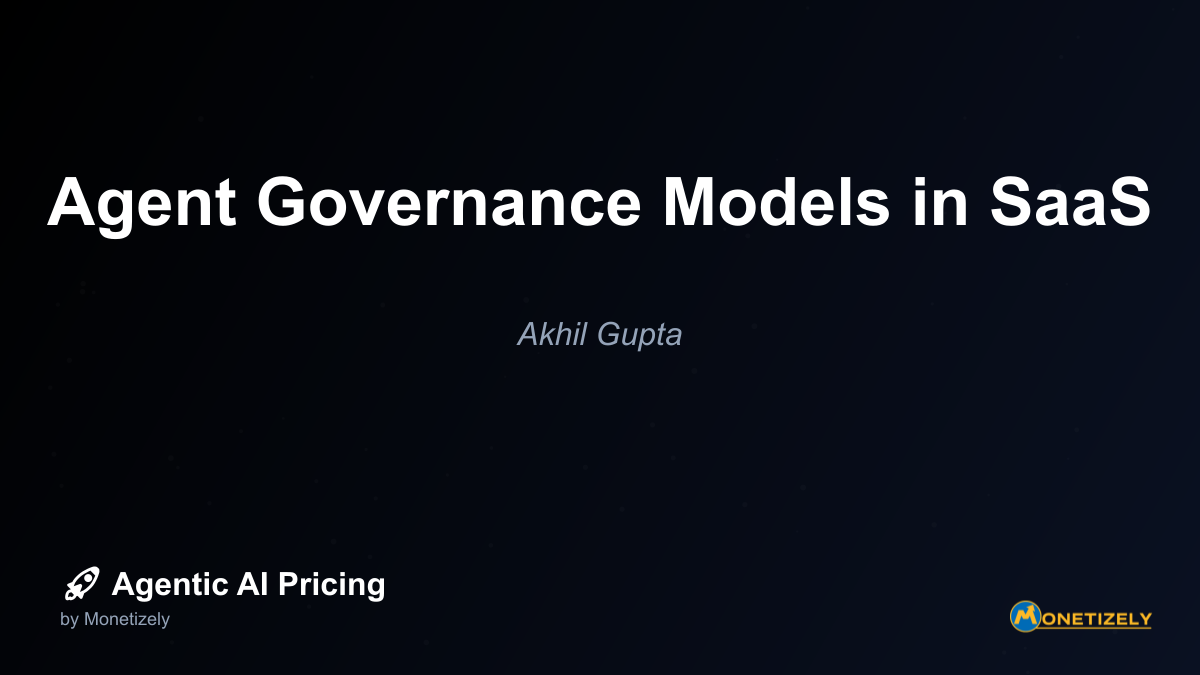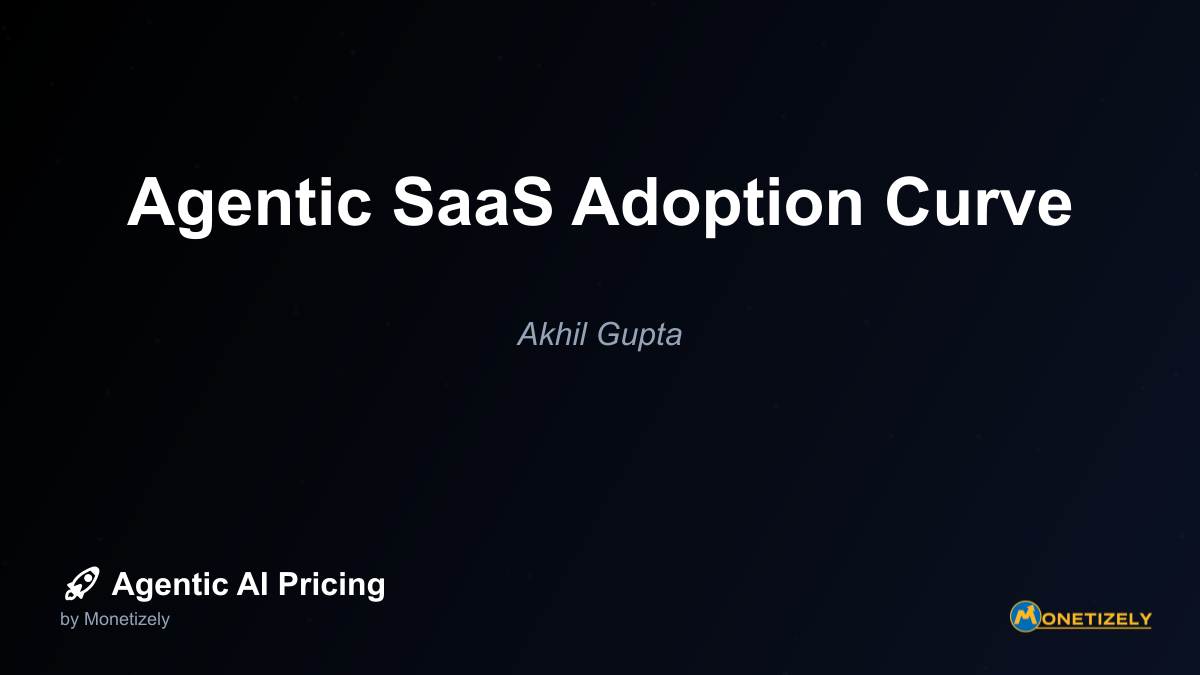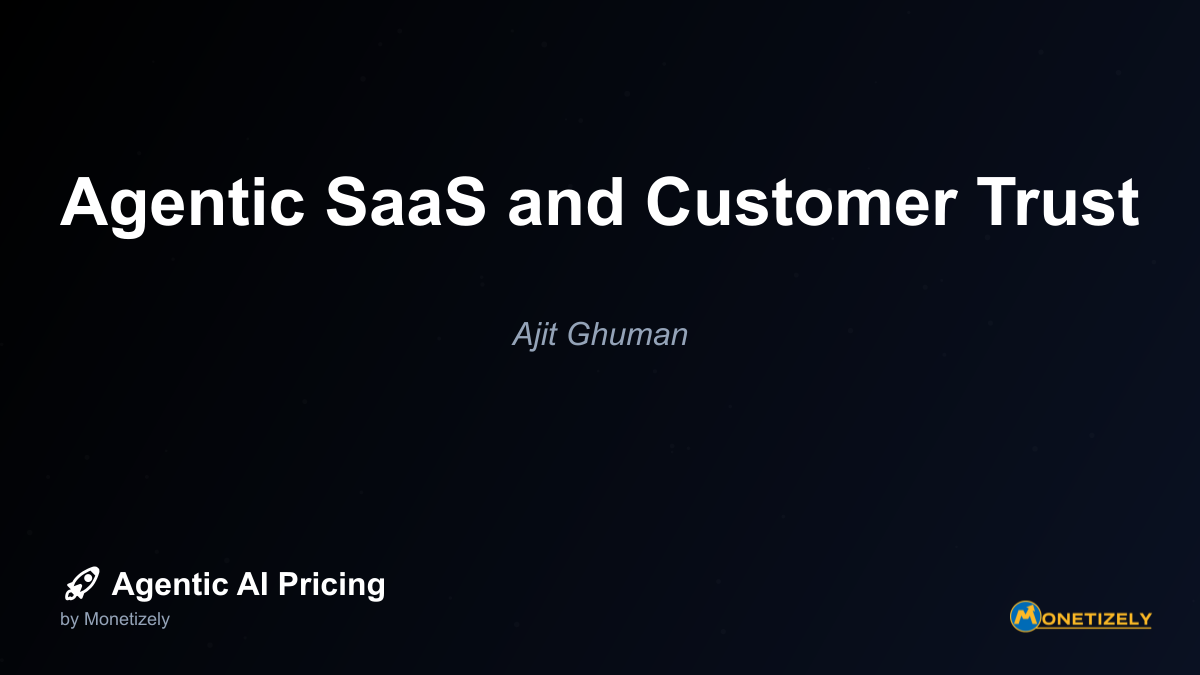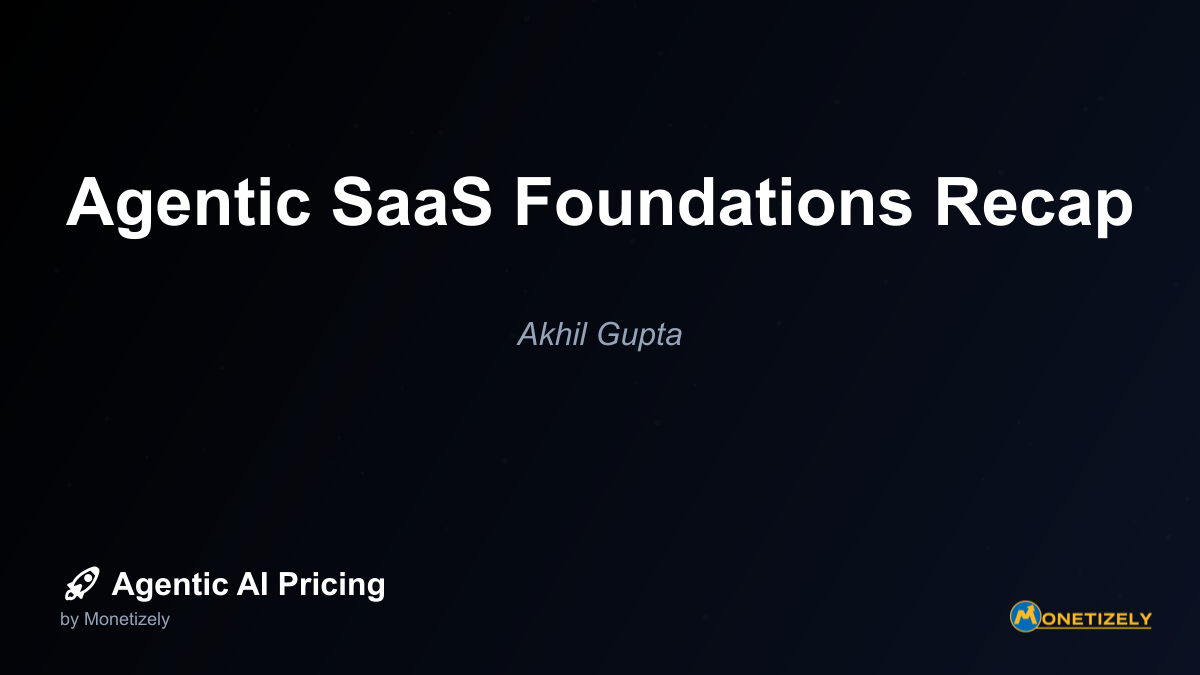· Akhil Gupta · Agentic SaaS Fundamentals · 4 min read
Business Models that Benefit Most from Agentic SaaS
AI and SaaS Pricing Masterclass
Learn the art of strategic pricing directly from industry experts. Our comprehensive course provides frameworks and methodologies for optimizing your pricing strategy in the evolving AI landscape. Earn a professional certification that can be imported directly to your LinkedIn profile.
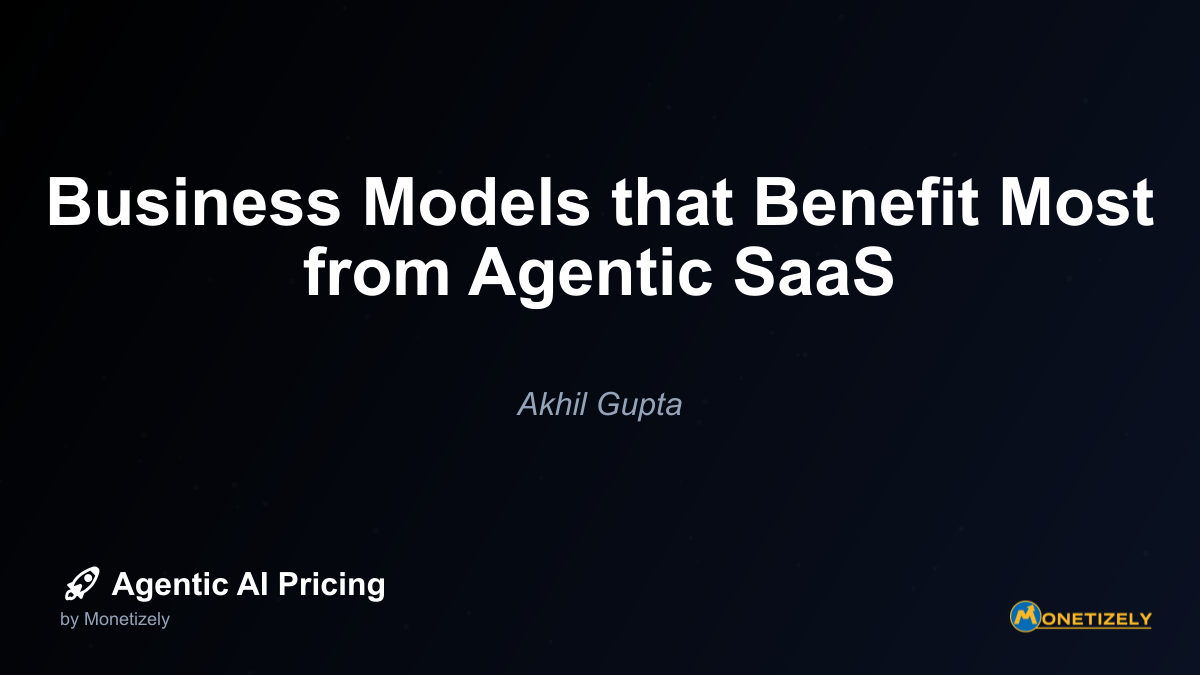
The unique value proposition of agentic SaaS solutions often requires rethinking traditional SaaS pricing approaches. Successful pricing strategies typically:
- Align pricing with measurable business outcomes rather than technical features
- Incorporate usage-based components that scale with actual value delivered
- Account for the continuous learning and improvement of agentic systems over time
- Provide clear ROI mechanisms that justify premium pricing for high-impact use cases
For organizations looking to develop effective pricing strategies for agentic SaaS solutions, our comprehensive guide on mastering agentic SaaS pricing techniques provides valuable frameworks and best practices.
Vertical-Specific Implementation Pathways
While the industries discussed above share common characteristics that make them ideal for agentic SaaS adoption, successful implementation requires understanding vertical-specific nuances.
Financial Services Implementation Pathway
Financial institutions should typically begin with:
Back-office process automation - Starting with internal processes like compliance monitoring, document processing, and reporting minimizes customer-facing risks while delivering immediate operational benefits.
Advisory augmentation - Implementing agentic systems to support human advisors represents a logical next step, enhancing service quality while maintaining human oversight.
Customer-facing automation - Only after establishing a track record of reliability should institutions deploy fully autonomous customer-facing systems for activities like trading, lending decisions, or portfolio management.
Healthcare Implementation Pathway
Healthcare organizations face unique regulatory and patient safety considerations that shape optimal implementation:
Administrative process enhancement - Beginning with revenue cycle management, scheduling optimization, and documentation support delivers immediate ROI without patient safety implications.
Clinical decision support - Implementing agentic systems to augment clinician decision-making represents a logical progression, with AI providing recommendations while clinicians maintain ultimate authority.
Autonomous monitoring and intervention - For specific use cases with clear protocols, such as remote patient monitoring or medication adherence programs, fully autonomous systems can eventually be deployed with appropriate safeguards.
Supply Chain Implementation Pathway
Supply chain organizations should typically follow this progression:
Visibility and analytics - Implementing agentic systems to monitor supply chain performance and identify optimization opportunities provides immediate value with minimal operational risk.
Planning and forecasting - As confidence builds, organizations can deploy AI agents to handle increasingly complex planning functions while maintaining human review of recommendations.
Autonomous execution - Eventually, agentic systems can assume responsibility for routine execution decisions like reordering, route optimization, and supplier selection within established parameters.
Measuring Success: KPIs for Agentic SaaS Implementation
Regardless of industry, measuring the impact of agentic SaaS adoption requires establishing clear key performance indicators (KPIs) aligned with business objectives.
Efficiency Metrics
- Processing time reduction
- Labor hours saved
- Error rate reduction
- Throughput improvement
- Cost per transaction
Quality and Accuracy Metrics
- Decision accuracy improvement
- Exception rate reduction
- Compliance violation reduction
- Customer satisfaction impact
- NPS improvement
Business Impact Metrics
- Revenue increase
- Margin improvement
- Customer retention impact
- Market share growth
- New product/service enablement
Strategic Value Metrics
- Speed to market for new offerings
- Innovation capacity enhancement
- Competitive differentiation
- Talent attraction and retention
- Organizational resilience
Conclusion: The Future of Business Models in the Agentic Era
The business models highlighted in this article represent the vanguard of agentic SaaS adoption, but the transformative impact of autonomous AI systems will eventually extend across virtually every industry and function. Organizations that recognize the alignment between their business needs and the capabilities of agentic systems stand to gain significant competitive advantages through early adoption.
As these technologies mature, we can expect to see:
New hybrid organizational models where human and artificial intelligence collaborate in increasingly sophisticated ways, each focusing on their comparative advantages
Novel business models built specifically around the capabilities of agentic systems rather than simply applying AI to existing processes
Ecosystem approaches where multiple specialized AI agents collaborate across organizational boundaries to deliver value impossible within traditional corporate structures
Regulatory frameworks that evolve to address the unique characteristics and implications of autonomous systems operating in regulated industries
For business leaders evaluating the potential impact of agentic SaaS on their organizations, the key question is not whether these technologies will transform their industries, but how quickly they need to act to maintain competitive positioning. The business models highlighted in this article face both the greatest potential disruption and the most significant opportunities for value creation through early, strategic adoption of agentic SaaS solutions.
By understanding the specific characteristics that make your business model well-suited for agentic adoption and developing a thoughtful implementation strategy, you can position your organization to thrive in this new era of autonomous business technology.
Co-Founder & COO
Akhil is an Engineering leader with over 16+ years of experience in building, managing and scaling web-scale, high throughput enterprise applications and teams. He has worked with and led technology teams at FabAlley, BuildSupply and Healthians. He is a graduate from Delhi College of Engineering and UC Berkeley certified CTO.
Pricing Strategy Audit
Let our experts analyze your current pricing strategy and identify opportunities for improvement. Our data-driven assessment will help you unlock untapped revenue potential and optimize your AI pricing approach.

